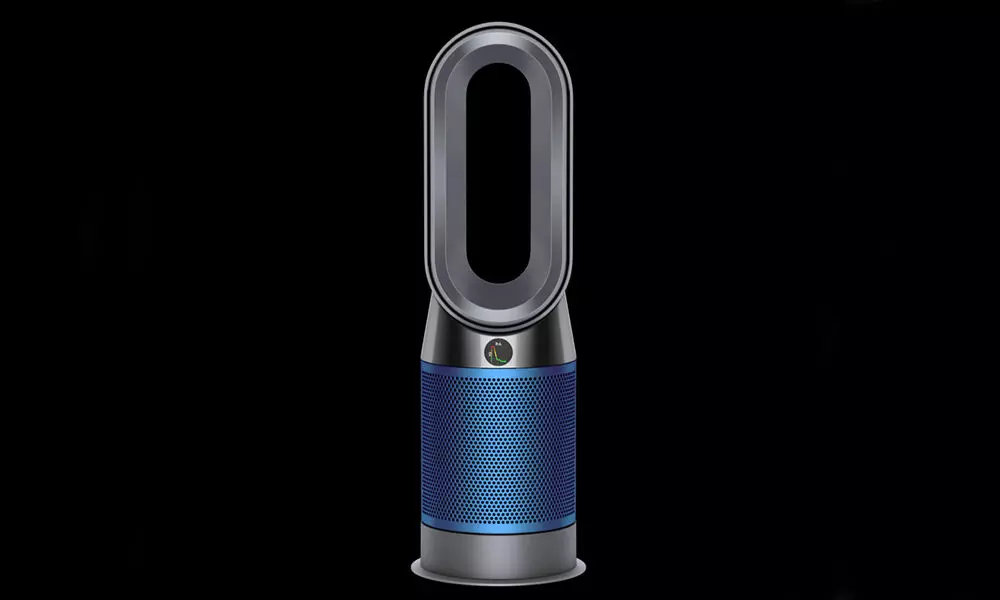Diwali 2021: Air purification- Need of the hour

Diwali 2021: Air purification- Need of the hour
Diwali is just around the corner and the crackers are going to add to the pollution. Modern home design contributes to this problem further, with homes globally now better sealed, leading to static air and bad circulation of airflow within the home. Pollution can effectively build up.
WHY DO WE NEED AN AIR PURIFIER?
Diwali is just around the corner and the crackers are going to add to the pollution. Diesel exhaust fumes, tobacco, soot, heavy metals and toxic organic compounds, are all present in the air. Everyday household objects like wooden furniture, candles, gas cookers, cleaning sprays, house plants and pets, release harmful pollutants inside your home where they can build up. Modern home design contributes to this problem further, with homes globally now better sealed, leading to static air and bad circulation of airflow within the home. Pollution can effectively build up.
Air pollution is a global problem, and India is not immune to it. According to WHO, 14 out of 15 most polluted cities in the world are in India. Especially in Delhi, you know, the problem of air pollution starts to rise with the onset of stubble burning that happens in the neighbouring states; which peaks during Diwali, and stays at high levels right through the beginning of winters. Proper air purification can help combat this, especially for a generation that is spending its maximum time indoors.
GUIDE TO CHOOSING AN AIR PURIFIER
Purifiers come in various shapes and sizes, remove different kinds of air pollutants in your homes, come with an array of specifications, and offer different features. To help you decide on what purifier to purchase, here are some things to consider.
1. Ability to sense and display real-time indoor air quality
In real life, the only way to truly know how well an air purifier is working is to monitor the air quality. Some purifiers offer sensing capabilities and are smart enough to respond by purifying the air automatically when pollutants are detected. To be able to sense, a purifier needs onboard air quality sensors. It should also have software and electronics that will allow it to process that information, and react intelligently to purify the air.
Some machines also come with digital displays that show the live indoor quality, and even the types and concentration levels of particles. This enables the user to understand air quality trends in their homes better. Only Dyson air purifiers display 4 different pollutants in real-time – PM2.5, PM10, VOC, NO2 4 . Three intelligent sensors automatically detect airborne particles and gases, then diagnose and report them in real-time.
2. Ability to capture potentially harmful pollutants in 1st pass
There are multiple methods of filtration in purifiers to consider. Here are four examples. Ultraviolet light uses electromagnetic radiation to destroy bacteria, viruses and mould. However, it does not remove dust, allergens or particles in the air. Activated carbon filters react chemically with pollutants to clear smoke, odours and gases from the air, but alone do not filter out harmful fine particles. Air ionisers work by sending out a stream of charged ions to attract dust and allergens. However, they can produce ozone as a by-product. Ozone is a respiratory irritant and a component of smog 1.
HEPA purifiers work by trapping pollutants and fine particle across a range of different sizes. These include pollen, bacteria, mould, dust mite debris and pet dander. They do not, however, remove volatile organic compounds such as formaldehyde, benzene or Nitrogen Dioxide. It is also worth noting that not all HEPA filters are created equal. Some are able to capture ultrafine particles, while others do not. Some purifiers combine HEPA filters with activated carbon (e.g. the Dyson Pure Cool purifying fan), enabling them to remove both particulate matter and volatile organic compounds.
Particles come in a range of sizes. The most commonly measured size is 2.5 microns. Particles of this size are referred to as PM2.5. Comparatively, PM0.1 is much smaller. Known as ultrafine particles, PM0.1 can be inhaled deeply into the lungs, deposited into alveoli to produce a host of harmful effects. Some purifiers can capture particles down to PM2.5, while others go beyond, and can trap particles as small as PM0.1. In addition, the efficiency of filtration can be increased by vacuum-sealing the filters to ensure that pollutants are not released back into the air. Only Dyson air purifiers have vacuum-sealed H-13 Glass HEPA and activated carbon filters 4 . Captures 99.95% of ultrafine particles as small as 0.1 microns, such as allergens and pollutants. Scientifically tested to capture pollutants as small as bacteria and viruses as small as PM0.1, including the H1N1 virus.
3. Ability to project purified air to every corner of the room
Finally, projection is an important consideration. Aside from sensing and capturing pollutants, some purifiers can help circulate purified air across the room. This can help in situations where purifiers are placed in the far corner, or the far end of a room. In order to support air circulation and to distribute purified air to people who are some distance away from the machine, some purifiers also double up as fans. Only Dyson air purifiers come with Air Multiplier TM technology and 350 degrees oscillation 4 that allows them to project purified air around the whole room properly.
4. Multi-functional products
Some air purifiers also double up as heaters or humidifiers for different parts of the year. With Self-regulating ceramic plates positioned at the front of the loop, heat the air as it leaves the machine. As the plates heat up, they conduct less electricity to help ensure they do not overheat. With thermostat control, once your target temperature is reached, the machine automatically stops heating, which saves energy. If the temperature starts to drop, it reactivates to maintain it.
The Dyson Pure Hot+Cool is the only air purifier and heater in one. It provides fast, safe, efficient heating and can be used all year round - it is able to purify continuously and warm users throughout the colder months.
TESTED FOR REAL INDIAN HOMES
This is an important consideration because unfortunately, the hazards of breathing in bad air may not be apparent immediately. This is where the Dyson POLAR test counters the existing industry-standard CADR test that has been around since the 1980s. This is done in a much smaller 12 sq. meter room, and the purifier is kept in the middle of the room. There is one air quality sensor in the room to detect the change in pollution levels. Interestingly, this test is also done with a ceiling fan helping the spread of clean air around the room. The challenge however is that this isn't exactly representative of the real-world environment—we do not keep purifiers in the middle of the room, is it? After this test, purifiers are given a rating. But the point is, an air purifier with a high CADR rating is not a true indicator of whether it may be cleaning the air and removing even the smallest particles from the indoor air.
The very foundation of the POLAR test is a lab, which is essentially a room, that is 27 square meters (around 290 sq. ft) in size. There is no added ceiling fan in the room. That is sound logic since the peak pollution season in India is winter and we don't use fans at that time of the year. As part of this test, the air purifier in question is placed in one corner of the room, pretty much how you would probably keep it in your living room or bedroom. The pollutants are then added into the room from the other corner, which is perhaps the toughest test of strength for an air purifier. There are nine air quality sensors placed in all corners of the room including one sensor in the centre, to understand the exact air quality in the different parts of the room at all times. These sensors can detect particles as much as 300 times smaller than a strand of human hair. Another important element of this test is the auto mode—all purifiers are tested at the automatic settings, first with the assumption that the user wouldn't want to interfere and secondly to check as to how good the automatic air quality detection of the purifier itself is. To learn more, please visit -https://www.dyson.in/products/air-purifiers/purifier-testing-standards
Dyson believes that this provides a better assessment of the cleaning prowess of an indoor air purifier, and how effective it will be in indoor situations in the real world. In January 2018, China's Household Appliance Standard and Technology Industry Alliance released the first accreditation for intelligent air purifying fans – featuring test methods first developed on Dyson's UK Technology Campus. Today, this accreditation sits alongside existing national standards in China, and we firmly believe the high bar we've set for the purification industry will drive us to deliver technology that works better.
Dyson in India
Dyson has a portfolio of air purifiers that cater to different needs and are unique in terms of their features and offerings, but share a commonality in delivering purified air to users at all times.
a. Dyson Hot+ Cool air purifier will now be available at an offer price of ₹ 39,900
b. Dyson Purifier Cool air purifier (TPO7) will now be available at an offer price of ₹ 39,015
c. Dyson Pure Cool Link Tower will now be available at an offer price of ₹ 24,900
Reporting & Smart Control
Besides the above, the Dyson air purifier can report real-time air quality data via the LCD screen on the machine and also via the Dyson Link app so users can access this remotely if needed. It reports on indoor air quality graph, PM 2.5, PM 10, NO2, VOCs, indoor temperature, indoor humidity, filter life and Wi-fi in the same order as mentioned.
The app also displays Outdoor air quality metrics for your chosen location from an available list. It helps you to remotely control your machine and take charge of your indoor air by giving users the ability to schedule up to five events and displaying high-resolution pollutant specific historical data for air quality
Additional Features
Amazon Alexa enabled. Certified asthma and allergy friendly by Allergy Standards Limited.Remote control with magnetized docking at the top.Bladeless design that is easy to clean, and safe for kids and pets. Quietmark certified for improved acoustic performance.

















